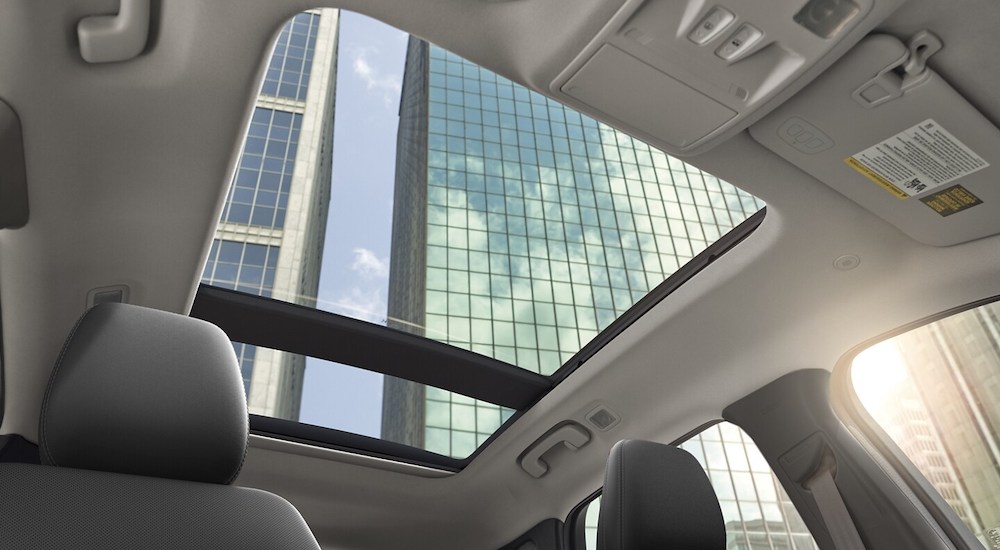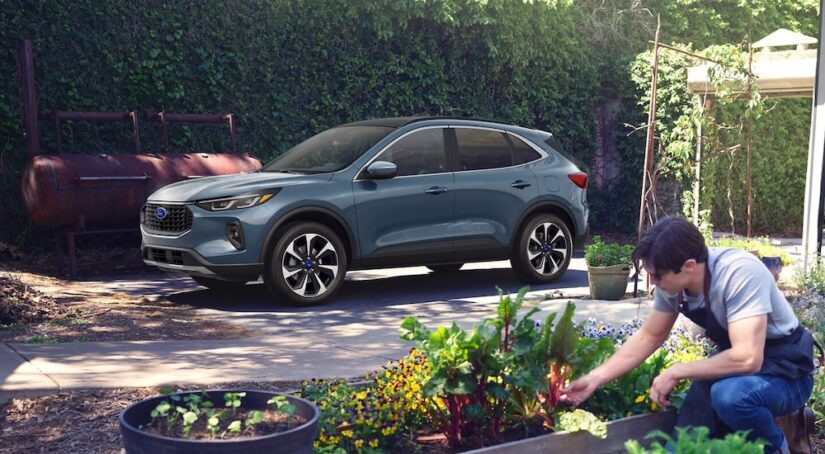If you see a 2024 Ford Escape for sale at your local dealership, you may notice that it has a significantly different fuel economy rating or horsepower figure from the vehicle next to it, even though that vehicle is also a 2024 Ford Escape. Under this single model name, Ford offers a lot of different options. That’s great if you want to customize your vehicle to work for your needs, but it can also get a little confusing if you aren’t familiar with the choices in front of you. There are a lot of differences between different trims of the Escape, from technology to style, but today, we’re going to focus on a major one: powertrains.
The term “powertrain” refers to the components of a vehicle that create and deliver power. This includes things like the transmission and drivetrain along with the star player: the engine. In hybrid vehicles, there are also electric motors that enhance the power that the engine provides. We’re going to take a look at the four different powertrains available on the Escape, what trims they go with, and what each of them has to offer.
Some Basic Terms
Because not everyone shopping for a vehicle is an automotive enthusiast, we’ll start off by defining a few common terms so you can keep them in mind when comparing the different powertrains:
- Horsepower: how much power an engine produces in a set amount of time — higher numbers mean higher top speeds and better ability to maintain high speeds.
- Torque: the twisting force the engine, motor, or combined system can produce — higher numbers mean faster acceleration and better ability to tow (measured in lb-ft).
- Fuel Economy: the distance that you can travel on a single gallon of gasoline (and/or an equivalent amount of electricity) — higher numbers mean you can go further on a full tank (measured in MPG [miles per gallon] or MPGe (miles per gallon equivalent).
- Drivetrain: the system that connects power to your axles — front-wheel drive or FWD sends power only to the front wheels, while all-wheel drive or AWD sends power to all four wheels, giving you better traction on gravel driveways, wet roads, etc.
- Transmission: a system that changes the vehicle’s settings to let it tackle a wide variety of situations — traditional systems have several speeds, aka gears (high gears for high speeds and low gears for low speeds and tough uphill climbs), and more gears means a better ability to go from high speeds to low smoothly and vice versa — continuously variable transmissions (or CVTs) don’t have a fixed number of gears but rather seamlessly raise and lower gear ratios to perfectly meet the scenario at hand.
#1. 1.5L EcoBoost
The base powertrain for the Escape is the 1.5L EcoBoost, which has a turbocharged three-cylinder engine that produces 180 hp and 199 lb-ft of torque paired with an eight-speed automatic transmission. This powertrain comes standard with FWD but can also be had with AWD if you’re willing to pay a little extra to upgrade. When properly equipped, an Escape with a 1.5L engine can tow up to 2,000 lbs, which can come in handy for everything from a vacation to a big move. The engine is lightweight and efficient, delivering 27 MPG in the city and 34 MPG on the highway for a combined rating of 30 MPG, according to the EPA. You’ll get about 444 miles of range for every full tank of gas.
This powertrain is the only option on the most affordable trim in the Escape’s lineup: the Active. Move one rung up the trim ladder to the ST-Line, and the 1.5L powertrain comes standard but can be replaced with the 2.5L I-4 Hybrid for an added cost. On higher trims, the 1.5L engine isn’t available at all. While it’s neither the most powerful nor the most efficient, this powertrain is a well-rounded option that’s great for drivers on a budget.

#2. 2.0L EcoBoost
The other non-hybrid powertrain available on the Escape is the 2.0L Ecoboost. With a turbocharged 4-cylinder engine that produces 250 hp and 280 lb-ft of torque, this is a powerful option that’s designed to give you more thrilling driving dynamics. It also unlocks the Escape’s maximum towing capacity: 3,500 lbs. While AWD is optional with the 1.5L powertrain, it comes standard on the 2.0L, along with AWD disconnect, so you can stick to more efficient 2WD when you don’t need the extra traction. All of that power does come at the expense of fuel economy, though — this powertrain gets a combined rating of 26 MPG and has a 408-mile range. Like the base engine, it uses an 8-speed automatic transmission.
This powertrain is the standard option on three trims that fall into the middle of the Escape’s lineup: the ST-Line Select, ST-Line Elite, and Platinum. Both ST-Line trims also have sport-handling suspension/tuning for even better driving dynamics, while the Platinum trim focuses on comfort and convenience rather than peak performance. If you do a lot of towing or performance is a high priority, this powertrain might be the best choice for you.
#3. 2.5L I-4 Hybrid
This powertrain is the only traditional hybrid option in the lineup, striking a balance between the convenience of a traditional gas-powered powertrain and the fuel economy of a plug-in hybrid. While the 4-cylinder engine is powered by gasoline, it’s helped along by an electric motor powered by a battery that’s charged through regenerative braking, a process that captures energy usually lost to heat so you can go further on a gallon of gas.
Between the engine and the motor, the system delivers 192 hp and 155 lb-ft of torque. While it delivers solid performance, it can’t tow as much as the non-hybrid options, maxing out at 1,500 lbs. The hybrid powertrain pairs with a CVT and can be had with either FWD or AWD. Either way, it’s rated at 39 MPG combined driving and can get up to 42 MPG in the city, giving you a total range of 558 miles.
Interestingly, this powertrain isn’t a standard option on any trim. If you want it, you’ll have to upgrade to it. But it’s also available on more trims than any other powertrain. You can have it on the ST-Line, ST-Line Select, ST-Line Elite, or Platinum. The upgrade is worth it for drivers who want the extra efficiency of a hybrid but don’t want to rely on plug-in charging for electric power.

#4. 2.5L I-4 Plug-In Hybrid
Finally, we come to the plug-in hybrid option, which is powerful and highly efficient. While the plug-in hybrid system uses regenerative braking, it can also be plugged directly into power at home or at a public charging station, expanding its range without adding any fossil fuels. The system overall provides 210 hp and 155 lb-ft of torque, allowing it to tow up to 1,500 lbs. Like the traditional hybrid, it uses a CVT, however, the plug-in hybrid system can’t be had with AWD.
Even if you never charge the battery, this powertrain is the most efficient option in the Escape lineup, delivering 40 MPG combined driving. However, because of its smaller tank, it does have a slightly smaller range than the traditional hybrid, at 520 miles. But if you do charge the battery, you can unlock an EPA-estimated fuel economy of 101 MPGe, saving you plenty of money on fuel costs over time. The plug-in hybrid Escape also has an all-electric driving range of 37 miles, so you can take short trips without using any gas at all. This powertrain is only available on the Plug-in Hybrid trim, where it comes standard and is the only option.



